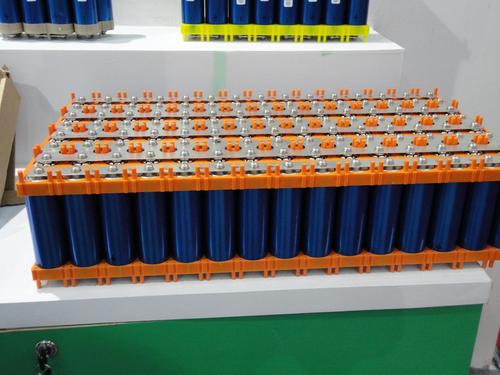In our modern world, where devices and vehicles are an integral part of our daily lives, the batteries that power them often go unnoticed. Yet, understanding the history and development of these power sources can provide us with valuable insights into the evolution of technology and its impact on our lives. Let’s embark on a journey through time to explore the fascinating story of LFP batteries, a crucial component of today’s energy landscape.
Introduction
LFP Batteries: Powering the Present and the Future
Before we dive into the history of LFP batteries, let’s start with a brief introduction to these remarkable energy storage devices. LFP, or Lithium Iron Phosphate, batteries are a type of rechargeable battery known for their exceptional performance and safety. They have become the backbone of numerous applications, from electric vehicles to renewable energy systems.
The Birth of LFP Batteries
From Laboratory Curiosity to Practical Power
Our story begins in the early 1990s when researchers were exploring new ways to improve lithium-ion batteries. These early experiments led to the discovery of lithium iron phosphate as a promising cathode material. Unlike traditional lithium-ion batteries, LFP batteries offered significantly improved thermal stability and safety, making them a game-changer in the world of energy storage.
Advancements in Chemistry
The Magic of Cathode Materials
To truly appreciate the development of LFP batteries, we must delve into the chemistry behind them. The key breakthrough came with the realization that lithium iron phosphate has a unique crystalline structure, allowing for the efficient movement of lithium ions. This property not only increased energy density but also extended the lifespan of the batteries, making them more reliable and cost-effective.
Commercialization and Mass Adoption
Powering Electric Dreams
As the 21st century unfolded, LFP batteries moved beyond the laboratory and into the real world. Electric vehicle manufacturers saw the potential of these batteries to revolutionize the automotive industry. Tesla’s use of LFP batteries in its Model S was a turning point, demonstrating the capabilities of this technology. Today, LFP batteries power millions of electric vehicles worldwide.
A Sustainable Future
LFP Batteries and Renewable Energy
The story of LFP batteries isn’t limited to electric cars. They play a vital role in the storage of renewable energy from sources like solar and wind. The ability to store clean energy efficiently has paved the way for a more sustainable and eco-friendly future.
The Evolution Continues
From LFP to Beyond: What Lies Ahead
As we’ve seen, LFP batteries have come a long way since their discovery. However, their development doesn’t stop here. Scientists and engineers are continually working to enhance the performance and reduce the cost of LFP batteries. This ongoing research promises even greater advancements in the years to come.
Beyond Energy Storage
LFP Batteries in Portable Devices
While LFP batteries have made a significant impact on large-scale applications, they are also finding their way into our everyday devices. From smartphones to laptops, these batteries offer a compelling alternative to traditional lithium-ion cells. Their enhanced safety features make them an attractive choice for personal electronics.
The Green Revolution
LFP Batteries and Environmental Sustainability
One of the most exciting aspects of LFP batteries is their contribution to environmental sustainability. As we shift towards clean energy solutions, LFP batteries play a pivotal role in reducing our carbon footprint. Their ability to store energy efficiently means we can harness the power of the sun and wind, even when they aren’t shining or blowing.
Challenges and Solutions
Overcoming Obstacles in LFP Battery Technology
No technological advancement comes without its challenges. LFP batteries are no exception. Issues like energy density and charging speed have been hurdles on the path to perfection. However, innovative solutions and research breakthroughs continue to address these challenges, ensuring that LFP batteries remain a viable and competitive energy storage option.
Conclusion
A Remarkable Journey
In conclusion, the history and development of LFP batteries are a testament to human ingenuity and the pursuit of a better, more sustainable future. From their humble beginnings in the lab to powering our electric dreams and reducing our environmental impact, LFP batteries have come a long way. As technology evolves, so too will these remarkable power sources, shaping the world of energy for generations to come.
Frequently Asked Questions
- What is the full form of LFP in LFP batteries?
- LFP stands for Lithium Iron Phosphate. It’s a type of cathode material used in rechargeable batteries.
- Are LFP batteries safer than traditional lithium-ion batteries?
- Yes, LFP batteries are known for their superior safety due to their stable chemistry and resistance to thermal runaway.
- What are the primary applications of LFP batteries?
- LFP batteries are commonly used in electric vehicles, renewable energy storage, and portable electronics.
- How do LFP batteries contribute to environmental sustainability?
- LFP batteries enable the storage of clean energy from renewable sources, reducing reliance on fossil fuels and lowering carbon emissions.
- What challenges do LFP batteries face, and how are they being addressed?
- Challenges include energy density and charging speed. Ongoing research aims to improve these aspects while maintaining safety and cost-effectiveness.
In this article, we’ve explored the history, development, and future potential of LFP batteries, making this complex technology accessible to the general public. Remember, as technology continues to advance, so too will our understanding of the world-changing power of LFP batteries.
